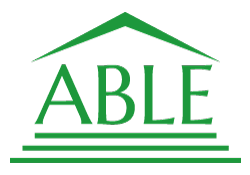The Focus - Our Tax E-Newsletter |
ABLE Act

It is estimated that there are 58 million individuals in the United States living with disabilities. There are many expenditures individuals with disabilities struggle to make that are often taken for granted by individuals not having a disability. To make matters worse some laws penalize individuals having disabilities with the loss of benefits if their savings exceed certain limits, making the need to save for disability related expenses very difficult. The Achieving a Better Life Experience (ABLE) Act was signed into law by President Obama on December 19, 2014 in what is said to be the most important piece of legislation for Americans living with disabilities since the Americans with Disabilities Act was signed into legislation.
Section 529 of the Internal Revenue Code was changed by the ABLE Act allowing individuals with disabilities the opportunity to create tax-free savings accounts. The account can then be used to pay qualified expenses, which are any expenses related to the designated beneficiary as a result of living with a disability. These expenses include (but are not limited to) education costs, housing, dental costs, medical care, community based supports, assistive technology, employment training, financial management, and transportation costs.
ABLE accounts are funded with after-tax dollars. ABLE accounts grow tax-deferred and withdrawals are tax-free as long as the funds are used for qualified disability expenses. The owner of the ABLE account is the beneficiary. Any person may make contributions to an ABLE account, including family, friends, and the beneficiary. Only one ABLE account is allowed for each qualifying individual. Twice a year beneficiaries, or account contributors, are allowed to change how their money is invested in the account. ABLE accounts are limited to contributions of $14,000 annually, which is the federal gift tax exclusion amount, and will be adjusted for inflation.
An age requirement and a severity of disability determination must be met for a person to be eligible for an ABLE account. Prior to turning age 26, the person must have become disabled, and the disability must meet the Social Security definition as such. Individuals meeting the age requirement who receive Social Security Income (SSI) and/or Social Security Disability Income (SSDI) can immediately set up an ABLE account. Individuals meeting the age requirement and not receiving SSI or SSDI need to obtain a disability certification form prior to setting up an ABLE account from their doctor.
Individuals with disabilities are only allowed to have $2,000 of assets in order to remain eligible for many federal benefit programs. The ABLE Act was designed to supplement federal assistance programs, not replace them. A huge benefit of the ABLE Act is the amount in the tax-free savings account does not count against an individual’s federal benefit program eligibility. ABLE savings accounts will not affect eligibility for SSI up to $100,000, Medicaid, and other public benefits. After $100,000 a beneficiary’s SSI will not be terminated, only suspended until the account is spent down under $100,000, while Medicaid eligibility remains untouched.
When a beneficiary passes away the ABLE Act contains a Medicaid pay-back provision. State Medicaid agencies are authorized by the federal law to become a creditor, seeking reimbursement for Medicaid services a beneficiary received since an ABLE account was opened. Priority is given to all outstanding qualified disability expenses (including burial costs) before Medicaid claims. The beneficiary’s estate then gets the remainder of the assets.
Individuals are able to open ABLE accounts in any state that has adopted their own ABLE legislation. Each state’s maximum regular 529 account total allowed (on average this is approximately $350,000) is the cumulative maximum amount allowed to be contributed overall to an ABLE account. Some factors to consider when looking at various state ABLE programs may be: minimum initial contributions, fees for opening or maintaining an account, as well as different investment options. Some states are allowing for state income tax deductions for contributions to an ABLE account.
New York State’s ABLE legislation was signed into law by the Governor on December 22, 2015. New York has adopted the federal $14,000 annual contribution limit which will be adjusted annually for inflation, and the maximum amount allowed in the account is $375,000. No New York State tax deduction will be allowed for any annual contributions.
Rather than creating a trust for a disabled person, ABLE accounts may be a crucial option for many families. For these families, ABLE accounts will offer more control and choice. Please feel free to contact your Dermody, Burke & Brown tax advisor to further discuss any questions you may have.
The information reflected in this article was current at the time of publication. This information will not be modified or updated for any subsequent tax law changes, if any.
